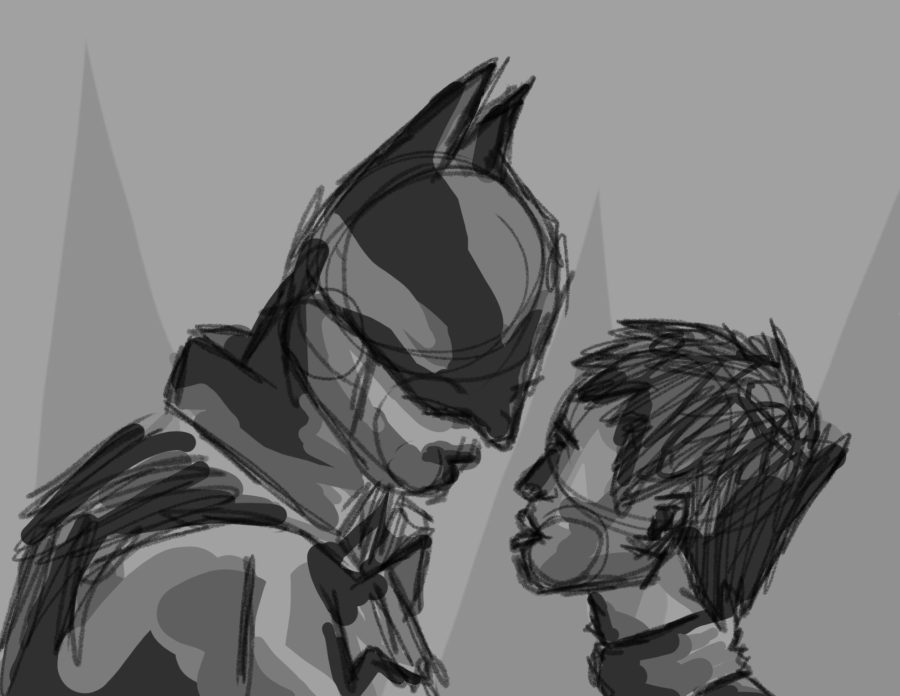The Batman Looks Behind the Mask
April 8, 2022
Falcon Rating: 4/5 Falcons
Hollywood’s ever-present superhero genre has historically provided audiences with a copy-pasted form of escapism. Inconceivable stunts performer against omnipresent computer graphics generate an endless fount of cheap stimulation: the junk food of the silver screen. Although The Batman has been marketed as a character-based noir thriller, it does falter, at times interrupting its psychological depth to flash its lights. The exposition establishes Gotham as an unflattering reflection of today’s world. Bruce Wayne’s first monologue states that Gotham’s ever-present crime isn’t an individual so much as it is an “element.” As is presented through the fearful body language of various petty evildoers, Batman has made himself a presence in the corner of every Gothamite’s mind, haunting the city even in his absence.
The Batman is a fresh interpretation of this character, which lends our superhero a tortured edge by waiving the conception that Bruce Wayne could comparmentalize his personas and live a normal life while enjoying his crime-fighting hobby on the side. This is certainly not the case in The Batman; Bruce seems more tormented by his vigilantism than fulfilled. Despite his devotion to this self-imposed burden, he endlessly questions what difference, if any, he’s making. Adroitly depicted through actor Robert Pattinson’s stony composure, Bruce’s eyes remain dark regardless of the copious black eye makeup and shaded mask they lie behind.
As he sifts through a patrol’s worth of footage gathered by camera-embedded contact lenses, it’s left ambiguous whether the violence Batman executes still fascinates Bruce Wayne, or if, two years into his mission, he’s already become completely numb to it. Either way, he’s clearly not scared of what fate awaits him. How can you make a thriller when your protagonist has a death wish? Despite Bruce’s reclusive and almost masochistic nature, he still protects those close to him—not out of obligation, but because they truly do better him. It’s through these relationships that our Batman is granted unusual and compelling depth.
The Batman leans heavily on his partner in (fighting) crime, Detective Gordon (Jeffrey Wright)—the one cop in Gotham able and willing to look past the batsuit. Gordon’s contributions to the central case of the film (not to mention the levity of the movie) underscore the error in Bruce’s belief that he’s better off working alone. Each time Selina Kyle (Zoë Kravitz) crosses his path, Bruce’s care for her conflicts more and more with Batman’s tendency towards clinical deduction. On a dawn-lit rooftop, Selina tells Bruce that he “assumes the worst in people … maybe we’re not so different.” Through this exchange of empathy, Catwoman succeeds in revealing that Batman is still very much human underneath his mask.
Sadly, a fully character-driven superhero drama wouldn’t satisfy old fans of the franchise: there must still be interruptions for flashy excitement. These technically fit in the plot sequence, but detract from an otherwise introspective tone and the majority of Batman’s death defying stunts leave the viewer less in awe than in disbelief. Devoting so much careful dialogue and relationship building towards realizing a tragically human interpretation of Batman, only to show him eat explosives and walk it off in the next scene demonstrates the existence of two separate intentions behind the camera: one occupied with making a good movie, and the other with making money.
This piece also appears in our March 2022 print edition.










